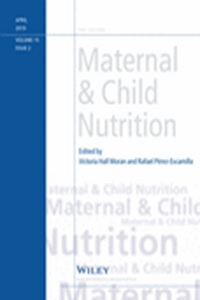Child stunting in Vietnam has reduced substantially since the turn of the century but has remained relatively high for several years. We analyzed data on children 6–59 months (n = 85932) from the Vietnam Nutritional Surveillance System, a nationally representative cross‐sectional survey. Multivariable Poisson regression models were used to estimate relative risk of stunting, stratified by child age and ecological region. Covariates at the child, maternal, household, and environmental levels were included based on available data and the WHO conceptual framework on child stunting. Among children 6–23 months, the strongest associations with child stunting were child age in years (RR: 2.49; 95% CI: 2.26, 2.73), maternal height < 145 cm compared to ≥ 150 cm (RR: 2.04; 95% CI: 1.85, 2.26), living in the Northeast compared to the Southeast (RR: 2.01; 95% CI: 1.69, 2.39), no maternal education compared to a graduate education (RR: 1.77; 95% CI: 1.44, 2.16), and birthweight < 2500 g (RR: 1.75; 95% CI: 1.55, 1.98). For children 24–59 months, the strongest associations with child stunting were no maternal education compared to a graduate education (RR: 2.07; 95% CI: 1.79, 2.40), living in the Northeast compared to the Southeast (RR: 1.94; 95% CI: 1.74, 2.16), and maternal height < 145 cm compared to ≥ 150 cm (RR: 1.81; 95% CI: 1.69, 1.94). Targeted approaches that address the strongest stunting determinants among vulnerable populations are needed and discussed. Multifaceted approaches outside the health sector are also needed to reduce inequalities in socioeconomic status.
Child stunting is associated with child, maternal, and environmental factors in Vietnam
Citation: Beal, Ty ; Tuyen, Le Danh ; Thi Huong, Trinh ; Burra, Dharani ; Huynh, Tuyen ; Duong, Thanh Thi ; Mai, Truong Tuyet ; Son, Nguyen Duy ; Nguyen, Kien Tri ; de Haan, Stef & Jones, Andrew D (2019). Child stunting is associated with child, maternal, and environmental factors in Vietnam. Maternal & Child Nutrition, e12826
2019-04-22
Asia
Vietnam
journal_article

